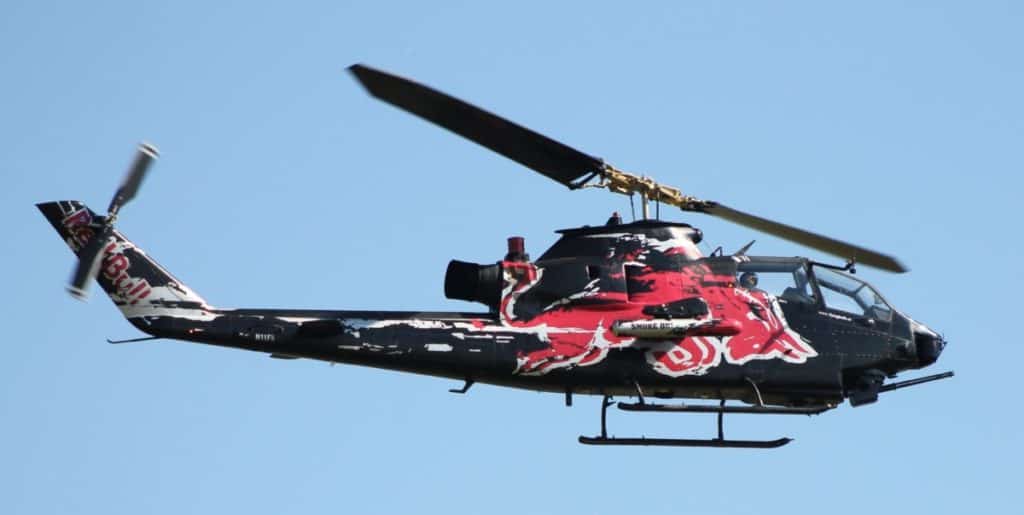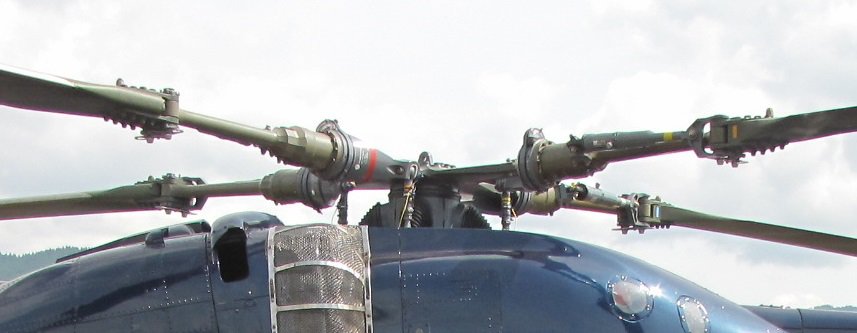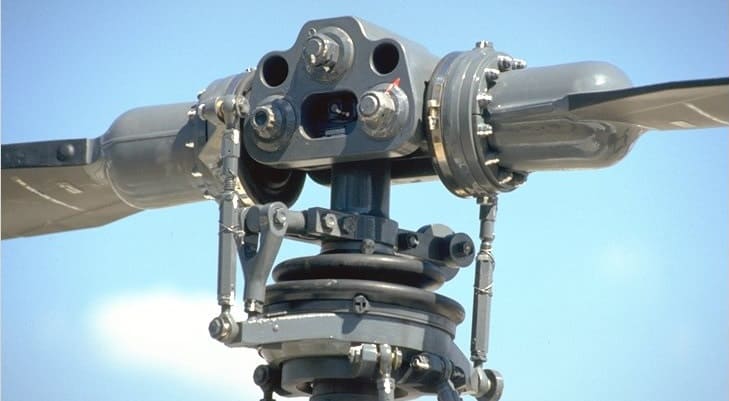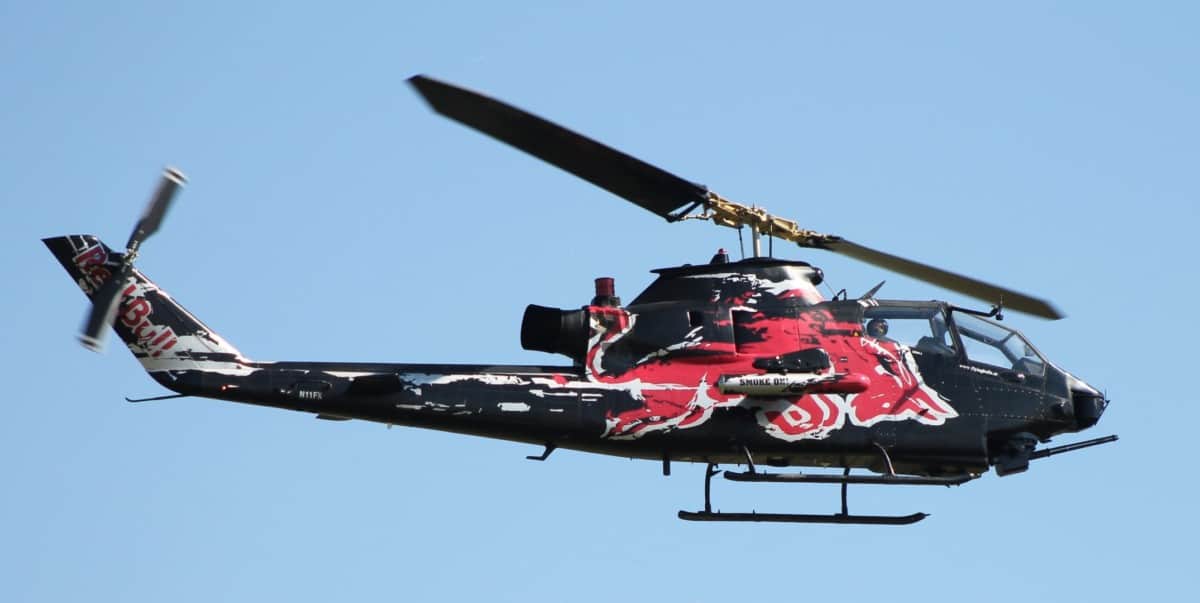
I remember the first time I ever saw a helicopter do a loop and it blew me away! It was a Westland Lynx back in the 1990s when I was a young teenager. I think that was one of the reasons why I got into RC helicopters before I upgraded to the full-size machines!
Helicopters can do loops, rolls, and certain aerobatics providing they have a strong main rotorhead and fuselage. Not all helicopters can do aerobatics and trying it in the wrong helicopter will be fatal. The Westland Lynx, BO-105, Bell 407, and many others have all been shown to do aerobatics.
Just because a helicopter can do these maneuvers, doesn’t mean a pilot should. Most helicopter flight manuals state ‘Aerobatics are Prohibited’. Only pilots, military display teams, and companies that are trained, maintained, and certified are legally allowed to do aerobatics.
Can a Helicopter Do a Barrel Roll?
Technically any helicopter can do a barrel roll providing it can maintain a positive 1 – 1.5G load on the rotor system at all times. This, however, can be very difficult to do, and thus anytime a helicopter’s rotor system ends up in a low, zero, or negative G situation the end result will most likely be catastrophic in a helicopter with the wrong type of rotor system.
Helicopters with Semi-Rigid or Fully-Articulated Rotor heads do not handle Low-G situations too well. Semi-Rigid is likely to get into Mast Bumping where the unloaded rotor hub collides extremely hard on its bump or droop stops and shears the main rotor mast.
A Fully-Articulated rotor head could have problems with high blade coning angles or extreme flapping leading to contact with the tail boom – All bad situations and never survivable.
The only helicopters that can take the loads imposed on a barrel roll are those with Rigid rotor heads or some Soft-In-Plane rotor heads with very strong Elastomeric hinges/bearings.
Helicopters that have been seen to barrel roll are:
- Westland Lynx
- MBB or BO-105
- MBB or BK-117
- Eurocopter EC120 Colibri
- Boeing AH-64 Apache
Can a Helicopter Do a Loop?
For a Helicopter to do a loop it needs a rigid or fully articulated rotor system so as not to get into mast bumping and the pilot needs to enter with just enough speed and height to pull the helicopter into and over the loop without imposing too much stress on the rotor system.
A loop or backflip is a maneuver where the helicopter pulls up and goes over the top upside down before pulling up and flying out level, just like a loop on a roller coaster.
Loops are a little easier on the rotor system, hence why more helicopters are able to complete one but it is still only able to be completed by helicopters with the same types of rotorhead as above.
The main thing with doing a loop is good speed control. The pilot needs to carry enough speed to get the helicopter to the top of the climb and pull it over the top, but too much speed would impose very high loads on the rotor system when coming out of the loop leading to severe overspeeding of the main rotor.
Helicopters that have been seen to Loop or Backflip are:
- Westland Lynx
- MBB or BO-105
- MBB or BK-117
- Boeing AH-64 Apache
- Hughes 500
- NH90
- Bell 407
- Sikorsky S-52
- Sikorsky CH-53 Stallion
- Eurocopter Tiger
- Eurocopter EC120 Colibri
- Eurocopter AS350 Astar
The first documented helicopter to complete a loop was a Sikorsky S-52 in 1959 with Harold E. “Tommy” Thompson at the controls.
You can see an old 8mm recording of the event here:
Learn More…
Try These Articles:
* Can Anyone Build a Helicopter? Top 5 Kits
* The Biggest Helicopter in the World: The Mi-26T2
Can a Helicopter Fly Upside Down?
Helicopters are not able to sustain inverted flight. They can momentarily be flown upside down during loops and rolls only. Helicopter rotor systems are designed to have the weight of the aircraft slung below them and inverting that weight results in catastrophic failure of the blade and rotor system.
Rotor blades are designed in such a way to be able to droop when not rotating and cone upwards slightly when rotating under load. When high loads are placed on the main rotor blades in the opposite direction to which they are designed this can result in a blade failing.
For the main rotor blades to produce lift, the pitch angle is controlled by the pilot to a create positive pitch angle on each main rotor blade. This is like sticking your hand out of a car window when you were a kid. When your hand was flat it stays put, when you begin to turn your thumb to the sky, your hand gets a positive pitch angle and begins to rise.
For a helicopter to fly upside down for a prolonged period of time its main rotor blades would need to be designed to take loads in both the regular way up and then when inverted. The helicopter would also need to be able to give the main rotor blades negative pitch to be able to create lift directed toward the ground when inverted.

Only some helicopters can put the rotor system into a degree or two of negative pitch angle, a fairly common feature for helicopters designed for Naval work.
The feature of negative pitch is used to help push the helicopter to the deck of a ship until it is secured by crews upon landing, but this also helps in its aerobatic role, but a degree or two of negative pitch is not enough to keep the helicopter in an inverted level flight. Most helicopters will be able to create up to 10-15° of positive blade pitch angle (Angle of Incidence).
The oil system in the engines and gearbox would have to be pressurized to ensure all the moving surfaces to not become starved of oil when inverted.
The fuel system would have to be pressurized to ensure the fuel supply remains constant when the helicopter is inverted.
The list goes on and on. There is no helicopter at this time that can fly for prolonged periods inverted because there is no commercial need for one to do that. Without the commercial need, no manufacturer is going to spend billions of dollars developing a helicopter that can do this.
The closest helicopters that would come close to flying inverted for more than a few seconds are the Westland Lynx and the BO-105. These are both fully aerobatic helicopters that were designed for military use with combat agility.

Join My Newsletter & Get Great Tips, Information and Experiences To Help You Become a Superb Pilot!
How Can a Helicopter Do Aerobatics?
For a helicopter to do sustained aerobatics it needs to have a very strong rigid or fully-articulated main rotor system and strong transmission mount, closed oil & fuel distribution systems, pilot training, and the correct speed and altitude to ensure the maneuver is completed successfully.
Most helicopters are not designed to handle the loads and flight characteristics that aerobatics impart on a helicopter but here are some of the things that make some helicopters able to do aerobatics:
Rotor Head Design
By far the biggest factor in walking away from aerobatics. Most rotor heads are designed to be constantly under load or in other words have the earth’s gravity of 1G pulling all the components towards the ground. When a helicopter enters a low or zero-G moment the load on the main rotor is immediately released from the rotor head which can cause the rotor disk to behave erratically, especially if it has a lot of freedom to move.

Rotor blades need to be able to Lead/Lag, Flap, and Feather to be able to operate. Each main rotor head design allows these movements in some form. There are three types of rotor head design:
- Semi-Rigid – All the blades, usually two, are fixed to the hub by a single hinge like a Teeter Toter. This allows the rotor blade to flap and feather but not lead/lag.
- Fully Articulated – All the blades connect to the hub and are hinged to be able to flap, feather, and lead/lag.
- Rigid – The blades are attached directly to the hub or mast and are allowed to feather only. The other movements are made through the material design of the hub and blades.

The rigid rotor head is what is on the Westland Lynx and the BO-105 and because of their strength, they are able to handle the loads imparted on the rotor system. The rotor head on the BO-105 is cast from a single billet of Titanium and is all one piece!
Oil System
In a helicopter, engine, and transmission shafts, bearings, and gears can be rotating at incredible speed. When a bearing in a gas turbine engine is operating around 35,000 rpm, yes, that is thousand, it needs oil constantly to keep it cool and keep it lubricated.
A bearing operating at this speed without oil will soon fail, dramatically too! Most oil systems on a helicopter operate using an oil sump that is then pumped throughout the engine/s and gearbox to all the necessary components. Gravity then allows the oil to run back to the sump to restart the cycle.
When a helicopter is inverted the oil is unable to return to the sump and pools in the wrong areas. Prolonged or repeated inverted flight may starve the oil pump and no oil will flow to the critical components.
A fully pressurized oil system may be needed to keep oil flowing without the need for gravity if the pilot is planning on running back-to-back inverted maneuvers.
Fuel System
Most helicopter fuel systems also rely on gravity. Fuel tanks mainly have fuel boost pumps and fuel suction nozzles mounted on the bottom of the fuel tank.
When inverted, fuel would then flow to the other end of the tank possibly allowing for air to be drawn into the fuel system causing a flameout – Not what a pilot wants when he is looking over his shoulders for the ground to appear!
A pressurized fuel system may also be required to ensure a constant supply of fuel makes it to the engine/s no matter the orientation of the helicopter. The original design of the helicopter fuel system will dictate if it requires modification.
Structural Loading
The structure of a helicopter is designed to be strong when suspended under the main rotor. Under normal flight conditions, the majority of high-G loads are incurred when in turns with high bank angles.
When a helicopter goes inverted the load imposed on the structure around the mast becomes weightless momentarily but a high dynamic load is then imposed when the aircraft returns to weighted, upright flight. This dynamic load needs to be handled by the structure.
Imagine your lifting a bag of concrete mix off the bed of a truck. It is manageable, now imagine someone throws that bag to you and you catch it, that sudden load imposed on your arms and back makes the bag feel a lot heavier.
This is the same as the fuselage after weightlessness.
Control Movements
A normal helicopter is designed to give a certain distance of movement on all of its controls required for normal flight. To initiate and recover from abnormal flight attitudes the control distances may need to be adjusted.
Pulling aft cyclic to get the helicopter over the top of a flip or pushing forward cyclic to roll the helicopter over its nose may require greater movement of the linkages to be able to complete these maneuvers.
Linkages may also have to be shortened to reduce the amount of movement the main rotor can make to increase the distance between the main rotor and the tail boom when inverted. Again, each helicopter is different and some may need no adjustments.
Pilot Training & Skill
Now the helicopter is strong enough and powerful enough to handle the aerobatics the next part comes down to pilot training and skill.
To be able to safely complete these aerobatic maneuvers a pilot needs to understand the fundamentals of each maneuver, the dangers associated with each maneuver, and the safe recovery actions.
Engaging in aerobatics in the wrong order can lead to drastic reductions in height with an inevitable collision with the ground. Flying an aerobatic performance at a high-density altitude requires the routine to be altered or performed higher due to the decreased performance of the helicopter.
This is what happened during Chuck Aaron’s famous Bond scene in the movie Spectre. The market square in Mexico City is 2,250m (7,300ft) with high temperature so the decision to film the loops and rolls was made to be conducted at lower altitudes and cut into the movie sequence.
Here is a video showing what happens when altitude and aircraft performance are not correctly calculated:
Professional helicopter aerobatic pilots are highly trained and understand the risks and performance calculations that need to be made for every part of the routine. For the average Joe to go out in his Bell 407 and complete a loop is just asking to end up in a smoking hole in the ground.
Learn More…
Try These Articles:
* Cost To Buy a Helicopter: 15 Most Popular Models
* Learning To Fly Helicopters – Is it really that hard?
Helicopter Aerobatic Teams
The majority of helicopter aerobatics teams belong to the world’s military but most recently the introduction of the civilian ‘Flying Bulls’ from Red Bull has exploded the popularity of seeing helicopter aerobatics all over the world.
Below is a list of some of the worlds most popular and currently performing helicopter display teams with links to their Wikipedia or websites if they have one.
- UK – Chinook Display Team – Royal Air Force
- UK – Black Cats – Royal Navy Fleet Air Arm
- Spain – Patrulla Aspa (Blade Patrol) – Spanish Air Force
- India – Sarang (Peacock) – Indian Air Force
- Netherlands – AH-64D Apache Solo Display Team – Royal Netherlands Airforce
- Russia – The Berkuts (Golden Eagles) – Russian Air Force
- Global – The Flying Bulls – Red Bull Civilian Aerobatics Team
Helicopter Aerobatic School
Since the retirement of Red Bull’s most recognizable North American aerobatic helicopter pilot, Chuck Aaron in 2015, he set up his own helicopter aerobatic flight school in North Carolina.
For pilots and non-fliers you are now able to go up and fly in an aerobatic helicopter doing loops, rolls, and many more!
You can find out more information on the Chuck Aaron Aerobatic School HERE


